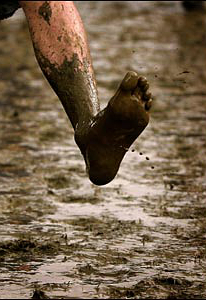Skin bugs hardly budge
 New research suggests you’re covered in bugs and there’s nothing you can do about it.
New research suggests you’re covered in bugs and there’s nothing you can do about it.
We all have our own personal smorgasbord of bacteria living on our skin, and it appears that they are barely affected by any washing or touching.
US scientists have found that oily skin sites, such as backs and ears, have the most stable bacterial and fungal communities, but even highly-exposed dry sites such as the palms have bacteria that stays largely the same.
By contrast, our feet and some more private sites were the least stable over time, perhaps due to factors such as personal hygiene.
Human skin is an ecosystem that provides a habitat for all sorts of bacteria, fungi, and viruses.
While most of these microbes are harmless or beneficial, some have been linked to skin disorders such as acne, psoriasis, and eczema.
Microbial communities can vary greatly across skin sites, but it has not been clear how these communities change over time, and how these changes may affect human health.
Metagenomic studies from the National Cancer Institute and the National Human Genome Research Institute in the US have found that bacterial, fungal, and viral communities tend to favour specific skin sites, but also serve as microbial fingerprints that are highly unique to individuals.
In the new study, the multi-institutional team examined the longitudinal stability of these skin microbial communities, using skin samples from 12 healthy individuals at three successive time points, spanning from 1 month to 2 years.
Surprisingly, skin microbial communities remained highly stable over time, despite exposure to external perturbations such as routine contact with other individuals, clothing, and environments.
Rather than taking on microbes from the environment, individuals retained their own unique microbial signatures.
But some skin sites contained more variable microbial communities than others. For example, oily skin sites such as the back and external auditory canal contained the most stable bacterial and fungal communities, and even highly exposed, dry sites such as the palm showed remarkable stability over time. By contrast, sites with high microbial diversity, such as the feet and moist sites, were the least stable over time, perhaps due to factors such as personal hygiene or exposure to more variable environments.








 Print
Print